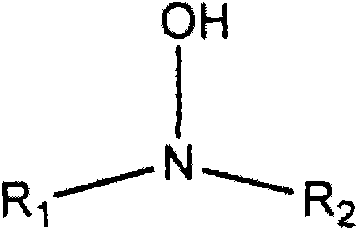Texturing method for single crystal semiconductor substrates for reduced reflection of incident light
A semiconductor and incident light technology, applied in semiconductor devices, semiconductor/solid-state device manufacturing, crystal growth, etc., can solve problems such as oxygen content reduction
- Summary
- Abstract
- Description
- Claims
- Application Information
AI Technical Summary
Problems solved by technology
Method used
Image
Examples
Embodiment 1
[0059] Three doped monocrystalline silicon wafers (from SolarGiga) had n+ doped regions on the front or emitter layer and pn junctions below the emitter layer. The above wafers were immersed in 18 liters of the high bath ratio texturing solution in a falconline. The formulation of the texture solution is shown in Table 1.
[0060] Table 1
[0061] components
content
0.5wt%
6wt%
[0062] 1,4-Butanediol 2
0.5wt%
7 --> water
93wt%
[0063] 1 Weight average molecular weight=192g / mol; 2 Flash point = 121°C
[0064] Flash point=140.5℃
[0065] Boiling point=268℃
[0066] Each wafer was weighed prior to texturing. The aqueous texturing solution was 80°C. No nitrogen sparging. The solution was manually stirred. The pH of the texturing solution was 13. During the texturing process, the dissolved oxygen content was measured using a D0202G2-WireDissolvedOxygen...
Embodiment 2
[0073] The method described in Example 1 was repeated using another three doped silicon single crystal semiconductor wafers. In addition to the components in Table 1, the formulation of the texturing solution included N-isopropylhydroxylamine. The formulation of the texture aqueous solution is shown in Table 3.
[0074] table 3
[0075] components
content
0.5wt%
6wt%
1,4-Butanediol
0.5wt%
N-isopropylhydroxylamine 3
0.017wt%
8 --> water
92.983wt%
[0076] 3 Hydroguard TM1-15 (Available from The Dow Chemical Company, Midland, MI, USA)
[0077] Each wafer was weighed before and after texturing. The aqueous texturing solution was 80°C. No nitrogen sparging. The solution was manually stirred. The pH of the texturing solution was 13. The results are shown in Table 4.
[0078] Table 4
[0079]
[0080] Addition of N-isopropylhydroxylamine reduces the oxy...
Embodiment 3
[0082] One of the two texturing solutions shown in Table 5 textured two doped monocrystalline silicon semiconductor wafers respectively.
[0083] table 5
[0084] components
Solution 1
Solution 2
1.2% bv
1.2% bv
6wt% (2ag / L)
6wt% (25g / L)
1,4-Butanediol
0.3% bv
0.3% bv
N-isopropylhydroxylamine
0
0.017wt%
water
margin
margin
[0085] Each wafer was immersed in one of the above two texturing solutions for 10 minutes. The solution was kept at 80°C and the pH of the solution was 13. Without nitrogen sparging, the solution was manually stirred. The oxygen content at the beginning of the texture in each bath was measured using a D0202G2-WireDissolvedOxygenAnalyzer. Solution 1 containing no N-isopropylhydroxylamine had an oxygen content of 3.3 ppm. In contrast, solution 2 containing N-isopropylhydroxylamine had an oxygen content of 0 ppm.
[0...
PUM
| Property | Measurement | Unit |
|---|---|---|
| flash point | aaaaa | aaaaa |
| boiling point | aaaaa | aaaaa |
| current density | aaaaa | aaaaa |
Abstract
Description
Claims
Application Information
 Login to View More
Login to View More - R&D
- Intellectual Property
- Life Sciences
- Materials
- Tech Scout
- Unparalleled Data Quality
- Higher Quality Content
- 60% Fewer Hallucinations
Browse by: Latest US Patents, China's latest patents, Technical Efficacy Thesaurus, Application Domain, Technology Topic, Popular Technical Reports.
© 2025 PatSnap. All rights reserved.Legal|Privacy policy|Modern Slavery Act Transparency Statement|Sitemap|About US| Contact US: help@patsnap.com



